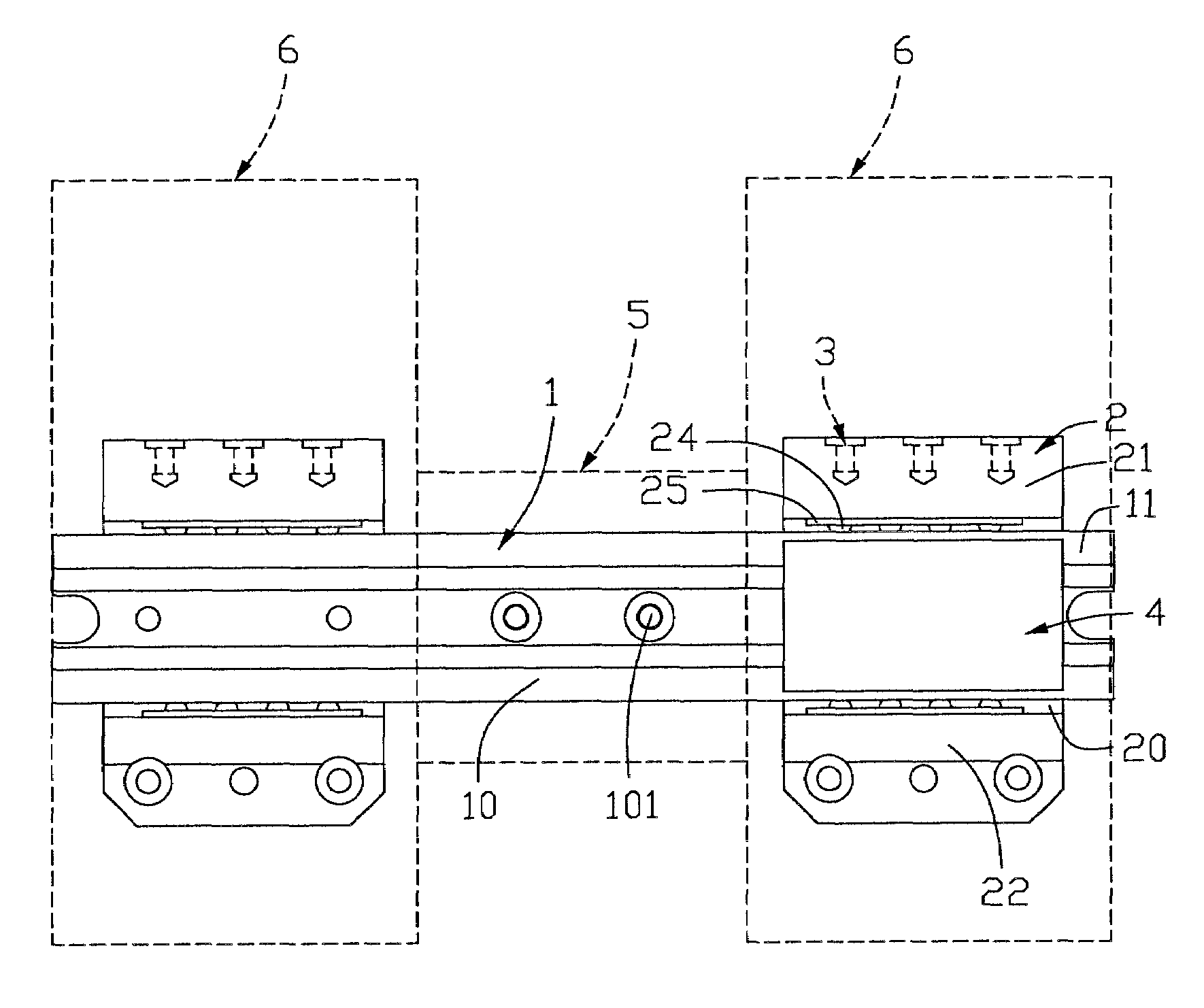Interpupillary distance adjustment mechanism for optical device
an optical device and interpupillary technology, applied in the field of interpupillary distance adjustment mechanism of optical devices, can solve the problems inconvenient carrying, and inability to adjust the distance of the optical device, so as to prevent the movement of the slide block along the slide rail, prevent the movement of the slide block relative to the slide rail, and prevent the effect of unfavorable monocular laser rangefinder viewing
- Summary
- Abstract
- Description
- Claims
- Application Information
AI Technical Summary
Benefits of technology
Problems solved by technology
Method used
Image
Examples
first embodiment
[0023]Referring to FIG. 1, an interpupillary distance adjustment mechanism for an optical device in accordance with the present invention comprises a slide rail 1, a pair of slide blocks 2 movably mounted on the slide rail 1, and a blocking member 4. The slide rail 1 comprises a middle mounting portion 10 and two track portions 11 at opposite ends of the mounting portion 10. Two mounting holes 101 are defined in the mounting portion 10 for extension of two screws therethrough, so as to mount the slide rail 1 on a middle support 5 (shown in dashed lines) of a binocular optical device. As clearly shown in FIGS. 2 and 3, a pair of cylindrical guide posts 12 is received in the bottom of each track portion 11 of the slide rail 1. A rectangular guide slot 13 is defined in each side of the track portion 11.
[0024]Each slide block 2, which is substantially U-shaped, comprises a recess 20 and a pair of side portions 21, 22 on opposite sides of the recess 20. A pair of receiving slots 200 (sho...
second embodiment
[0026]FIGS. 4 and 5 illustrate an interpupillary distance adjustment mechanism for an optical device in accordance with the present invention. In this embodiment, the blocking member, which is designated with reference numeral 4′ for distinction, comprises a magnet 41′ disposed above one of the two track portions 11 of the slide rail 1, and an interrupter 42′ arranged between the magnet 41′ and the track portion 11. The magnet 41′ is preferably a strong magnet, such as an Nd—Fe—B magnet. The interrupter 42′ is made of non-magnetic materials, such as aluminum, brass or bronze. Alternatively, the interrupter 42′ may be a reverse magnet, such as a rubber magnet, which generates reverse magnetic force to partially counteract the strong magnetic force of the magnet 41′. The rubber magnet is made from rubber materials such as cured nitrile rubber as binder containing barium ferrite magnet particles. The rubber magnet is flexible, and uneasy to break and crack against shock. Therefore, it ...
PUM
 Login to View More
Login to View More Abstract
Description
Claims
Application Information
 Login to View More
Login to View More - R&D
- Intellectual Property
- Life Sciences
- Materials
- Tech Scout
- Unparalleled Data Quality
- Higher Quality Content
- 60% Fewer Hallucinations
Browse by: Latest US Patents, China's latest patents, Technical Efficacy Thesaurus, Application Domain, Technology Topic, Popular Technical Reports.
© 2025 PatSnap. All rights reserved.Legal|Privacy policy|Modern Slavery Act Transparency Statement|Sitemap|About US| Contact US: help@patsnap.com



